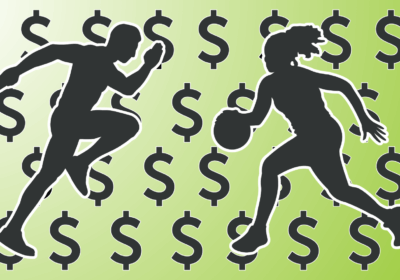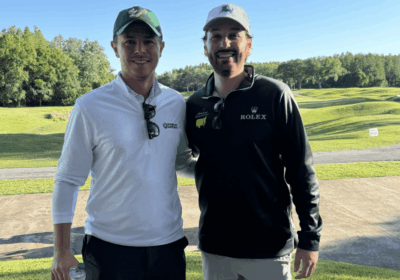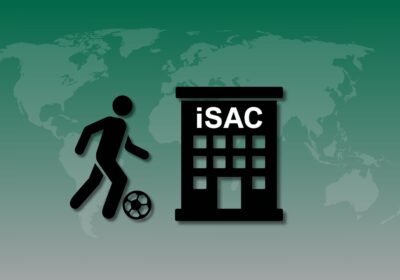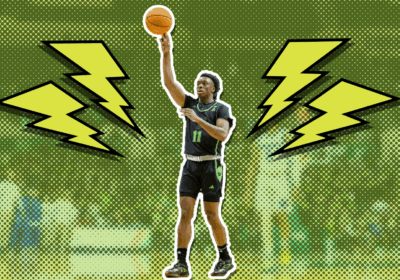‘Papa’ John bridges gap between sports and marketing

"Papa" John Schnatter told his story of using sports to aid his business' growth during USF's Sports and Entertainment Marketing MBA Lecture Series. ORACLE PHOTO/ADAM MATHIEU
As part of the Sports and Entertainment Management MBA Lecture Series, John Schnatter — founder and CEO of Papa John’s Pizza — sat in a chair on the stage of the Marshall Student Center Oval Theater ready to tell his story about a small pizza company that flourished into a national powerhouse using sports to market his product.
A crowd of nearly 500 journalists, Papa John faithfuls and business students sat eagerly to hear his all-too-familiar voice.
In 1982, then-20-year-old Schnatter began to get tired of the college grind. As a delivery boy for Greek’s Pizzeria in Muncie, IN, Schnatter saw an opportunity for a way out.
He decided he wanted to forgo his remaining years at Ball State to open a Greek’s franchise of his own in Bloomington, IN.
But that dream remained just that: a dream.
His grandfather always told him to finish what he had started. And so he did. Schnatter stayed in school.
He drew up his plans for his own pizza shop — kitchen layout, logos and recipes, included. Knowing this dream had to wait, he placed these ideas, which would later become one of the largest restaurant chains in the U.S., into a small box and tucked them away in a closet back home while he finished school in three years.
It wasn’t until decades later that his affinity for quality pizza would stand hand-in-hand with one of the world’s most profitable markets: sports.
“Colonel (Sanders), up in D.C., owns 30 percent of that market,” Schnatter said. “Twenty years ago, he tried to get me to (partner with) the Redskins … Well, he did it behind my back, and it worked. There’s something to sports.”
Papa John’s gained more steam, picking up more teams until the franchise signed with the NFL as an official sponsor in June of 2010.
“Sports and pizza are pretty similar,” Schnatter said. “They both bring families and friends together, so, they complement each other.”
Schnatter knew he had struck a gold mine and knew he could use it to grow his company. But good marketing needs good spokespeople. For this he needed high-caliber players, but not just any players. He wanted well-behaved people that he could trust representing his brand.
One of the newest faces of Papa John’s, Houston Texans All-Pro defensive end J.J. Watt — seen trying to lift a “hefty” slice of pizza in his commercials — used to deliver pizzas for Pizza Hut between stints at Eastern Michigan and Wisconsin.
But that didn’t stop Schnatter from going after the young star.
“I flew down to meet with J.J. and I told him, you can do what you want,” Schnatter, now 54, said. “We said, ‘If you want to go to Pizza Hut, we have no problem with that. Do what’s best for you.’ And he liked that, he liked what we were doing and we signed him the next week.”
Denver Broncos quarterback Peyton Manning, Papa John’s current main spokesman, had a much different journey to Papa John’s.
Manning worked with a charity organization called “Paychecks” for a hospital in Indianapolis that Schnatter and his wife regularly donate to.
Months after a donation, Schnatter received a call saying Manning had wanted to meet with him.
After having dinner with the four-time NFL MVP and his wife, the two instantly clicked, embarking on what is now the cornerstone of Papa John’s marketing strategy.
Manning owns 32 Papa John’s franchises in Denver alone. Prior to his addition in the market five years ago, the company was losing a million dollars a year in Denver. Now, with Manning in the mix, Papa John’s saw profits rise to $3 million.
In the Dallas market, the company was losing $2 million. After signing a deal with Cowboys Owner Jerry Jones, the market saw a $15 million increasing, making the power of sports abundantly clear.
In college it was a vision drawn on a piece of paper. That dream transitioned into a small pizza shop operating out of a broom closet in his father’s biker bar and has now transitioned into a $1.3 billion enterprise.
—Follow on Twitter @JacobHoagUSF







